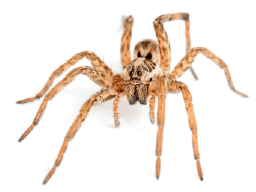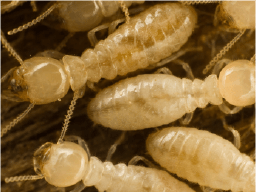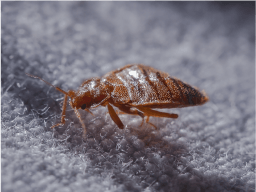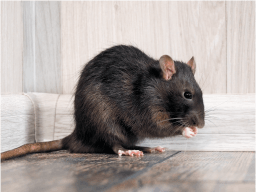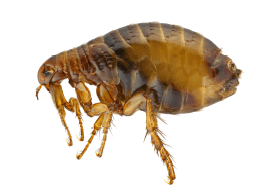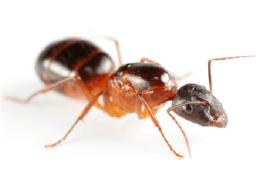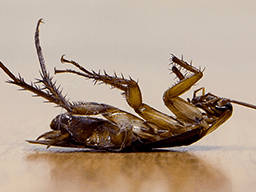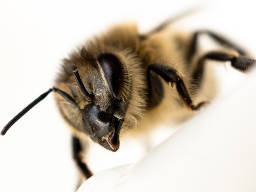June Bugs vs Cockroaches: How Are they Different?
by John Saenz | February 2, 2025 | Blog
If you’ve spotted large insects around your property, you might be wondering whether you’re dealing with June bugs or cockroaches. While both these insects can be unwelcome visitors, they have distinct characteristics and behaviors. Understanding these differences is crucial for implementing effective control measures and protecting your home and property.
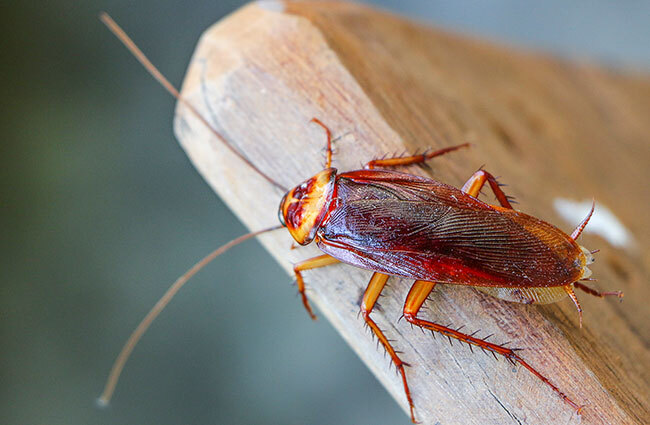
What are June bugs?
June bugs belong to the genus Phyllophaga with over 300 different species. These seasonal pests emerge from the soil in late spring and early summer, which is how they got their name. Found throughout North America, they’re primarily outdoor pests that feed on plant material.
Unlike cockroaches, June bugs are attracted to light and are most active during warm summer evenings. Their activity is typically limited to a specific season, and they don’t seek to enter homes except when attracted by lights.
What are cockroaches?
Cockroaches are highly adaptable insects that have evolved to thrive in human environments. These persistent pests belong to the order Blattodea and include several species commonly found in homes, such as German, American, and Oriental cockroaches.
Unlike June bugs, cockroaches are year-round pests that actively seek out human habitations for food, water, and shelter. They are primarily nocturnal scavengers that can feed on virtually any organic matter, making them particularly problematic as household pests.
What do June bugs look like?
June bugs are large beetles measuring almost an inch in length. Their color ranges from reddish-brown to dark black, depending on the species. They have robust, oval-shaped bodies and hard wing covers called elytra.
Many species lack distinctive markings but have a hairy underbelly. Their legs are spiny, adapted for digging, and they have characteristic clubbed antennae. When in flight, they appear somewhat clumsy and are often attracted to lights at night.
What do cockroaches look like?
Cockroaches have flat, oval bodies with long antennae and spiny legs. Size varies by species—German cockroaches measure about 1/2 inch while American cockroaches can reach 2 inches in length. Most species are reddish-brown to dark brown, with some variations in color patterns.
They have six legs built for speed and two pairs of wings, though not all species fly. Their heads are typically hidden beneath a shield-like pronotum, giving them their characteristic appearance
What are some main differences between June bugs and cockroaches?
Several key characteristics distinguish June bugs from cockroaches. June bugs are seasonal pests active primarily in summer, while cockroaches are year-round problems. June bugs have harder, more rounded bodies compared to cockroaches’ flat, flexible forms.
Their behavior differs significantly—June bugs are attracted to lights and stay mostly outdoors, while cockroaches avoid light and actively seek indoor shelter. June bugs feed primarily on plants, while cockroaches are omnivorous scavengers. Additionally, June bugs are generally less agile than cockroaches and don’t display the same quick-escape behavior.
What are more dangerous: June bugs or cockroaches?
Cockroaches pose significantly greater health risks than June bugs. They can spread numerous disease-causing organisms, including E. coli, Salmonella, and various parasites. Cockroach droppings and shed skins can also trigger allergies and asthma, particularly in children. Their habit of moving between waste areas and food preparation surfaces makes them effective disease vectors.
June bugs, while destructive to plants, pose minimal health risks to humans. They don’t bite, sting, or transmit diseases. Their primary impact is environmental—damaging plants during their adult phase and lawns during their grub stage. While they can be a nuisance when flying around outdoor lights, they don’t contaminate food or living spaces like cockroaches do.
Lifecycle of a June bug
June bugs begin as eggs laid in soil during early summer. After hatching, larvae (white grubs) feed on grass roots for 1-3 years, depending on the species. During winter, grubs burrow deeper into soil to survive. In spring of their final year, grubs pupate and transform into adults. Adult June bugs emerge in late spring/early summer, mate, and females lay eggs to restart the cycle. Adults only live for a few weeks.
Lifecycle of a cockroach
Cockroaches develop through three stages: egg, nymph, and adult. Females produce egg cases called oothecae, containing multiple eggs. These cases are often hidden in cracks and crevices. Nymphs emerge and molt several times before reaching adulthood, a process taking 2-6 months depending on species. Adults can live up to a year, with females capable of producing multiple egg cases throughout their lifetime.
How to know if you have a June bug infestation
Signs of June bug activity include adults flying around outdoor lights on summer evenings and damaged plant foliage with irregular holes or chewed edges. In lawns, check for brown patches and damaged grass that can be easily pulled up—this indicates grub feeding activity below.
You might also notice increased bird and animal activity as they dig for grubs. Adult June bugs are most visible during warm evenings in late spring and early summer.
How to know if you have a cockroach infestation
Look for dark, pepper-like droppings, particularly along walls and in cabinet corners. Cockroaches leave behind an oily, musty odor in heavily infested areas. You might spot egg cases—small, brown capsules—in hidden areas.
Live cockroaches seen during daylight often indicate a severe infestation since they typically hide during day hours. Look for smear marks along walls where they frequently travel and check for shed skins which look like lighter versions of the insects themselves.
Do you get rid of June bugs and cockroaches the same way?
These pests require different control approaches. June bug control focuses on outdoor treatment and grub control in lawns, while cockroach control centers on indoor treatments and sanitation. Professional pest control services can provide targeted solutions for both pests, implementing appropriate treatment strategies for each species and situation.
How to prevent a June bug infestation
You’ll want to focus on lawn maintenance to prevent June bug infestations and maintain healthy grass through proper watering and mowing practices to help resist grub damage. You can also apply nematodes or milky spores in late summer when grubs are most vulnerable. Reduce outdoor lighting during June bug season or switch to yellow “bug lights” that are less attractive to these pests.
Keep your yard free of weeds and maintain proper drainage to discourage egg-laying. Consider installing physical barriers around valuable plants during peak June bug season. Regular monitoring of your lawn for signs of grub damage can help catch problems early so you know if you need to call a professional.
How to prevent a cockroach infestation
Prevention for cockroaches focuses on sanitation and exclusion. You’ll need to seal all potential entry points around pipes, utilities, and foundations. Fix leaky pipes and eliminate moisture sources that attract cockroaches. Keep food in sealed containers and clean up spills immediately to avoid attracting roaches. Regular cleaning, including vacuuming and proper garbage disposal, helps eliminate food sources.
Store recycling outside when possible and keep garbage in sealed containers. You’ll also need to reduce clutter that provides hiding spots, particularly in kitchens and bathrooms. Regular inspection of packages and boxes before bringing them inside can prevent inadvertent introduction of cockroaches. You’ll also want to maintain clean drains and regularly inspect under appliances and behind cabinets where cockroaches commonly hide.
If you’re dealing with June bugs or cockroaches in your home or yard, don’t wait for the problem to get worse. We partner with some of the highest trained pest control providers to ensure you receive expert service and effective lasting solutions for all of your pest problems.
Call us today for a FREE quote and schedule your home pest inspection right away. Our experienced team is ready to help you no matter what your pest situation is to get back peace of mind and create a pest-free zone!





